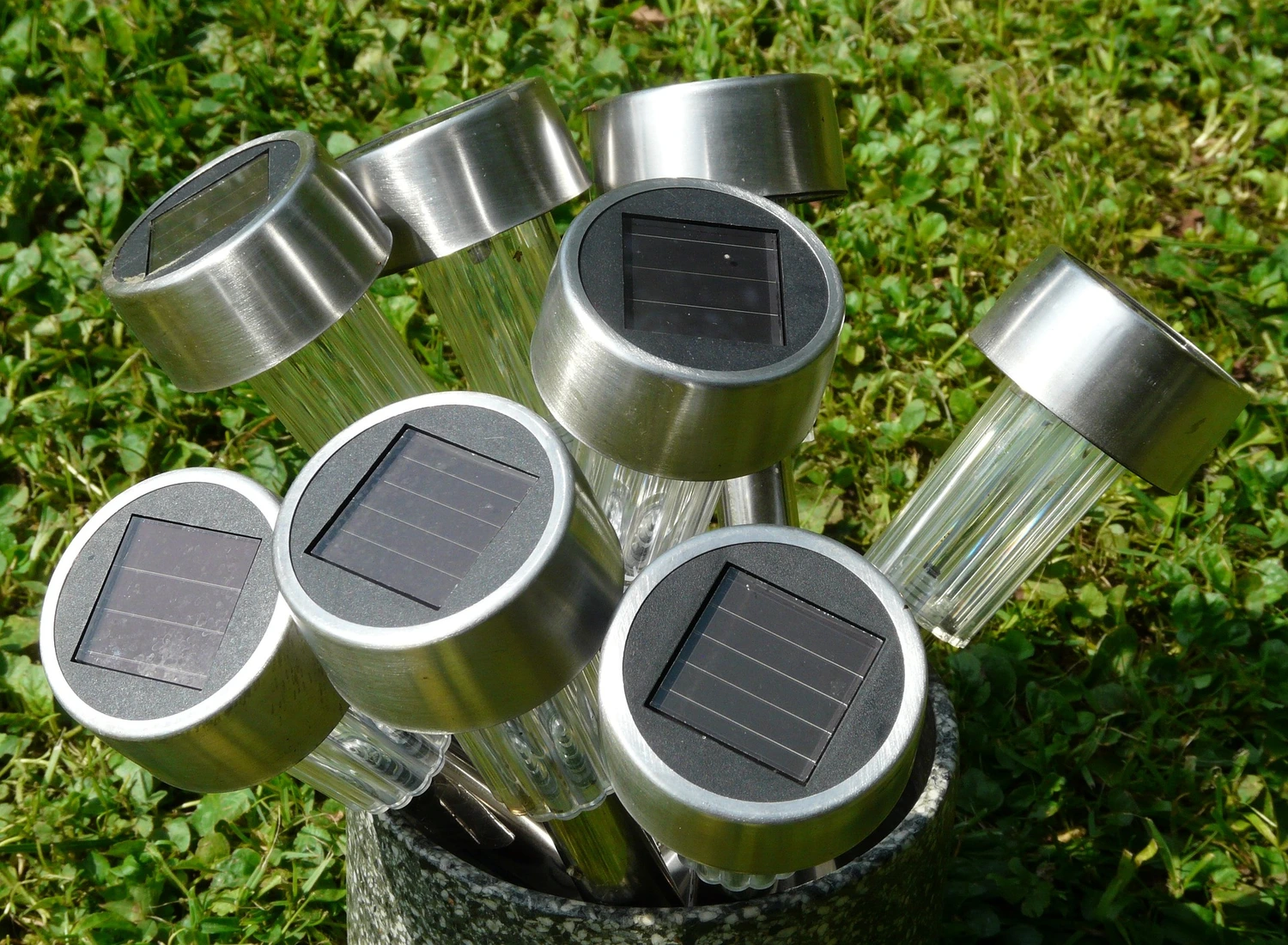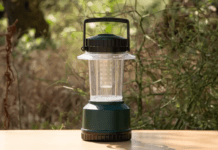Do you need information on how to install a solar CCTV camera in your home or workplace? Then, read through this article to get all the details on how to install a solar CCTV camera.
In this article, I’ll take you by the hand and walk you through all the steps on how to install solar CCTV cameras, be it in your home or workplace, and I believe that it will be of great help to you.
Nonetheless, to ease your reading, care has been taken to present this article in sections. The first section covers the overview of solar panels and is then followed by a detailed explanation of the pros and cons of solar CCTV cameras.
In the section that follows, you’ll get to know the benefits of solar CCTV cameras, and also the factors to consider before installing a solar CCTV camera in your home or anywhere else.
Furthermore, as you read on, you’ll find the most important part of this article – the step-by-step guide on how to install a solar CCTV camera.
Lastly, I will provide answers to some frequently asked questions, and then wrap it up with my final thoughts.
So, stay glued as I walk you through the whole stuff.
How To Install Solar CCTV Camera: Overview
Solar-powered CCTV cameras are an innovative solution for remote surveillance and monitoring. These cameras utilize solar panels to generate power, which can be stored in a battery for later use. This makes them ideal for use in areas where there is no power source available, or where it is difficult to run power cables.
It consists of several components, including a solar panel, battery, camera, and housing. The solar panel is typically mounted on top of the camera housing and is responsible for generating power from the sun’s energy. The battery is used to store the power generated by the solar panel, ensuring that the camera can operate even during times when there is no direct sunlight available.
The camera itself is typically a high-resolution IP camera that can capture high-quality video and images. It is usually equipped with a range of features, including night vision, motion detection, and remote access. The camera’s housing is designed to protect it from the elements and may be made of materials such as aluminum or polycarbonate.
One of the main advantages of solar-powered CCTV cameras is their ability to operate in remote locations. Since they do not require a power source, they can be installed in areas such as construction sites, farms, or rural properties where there is no access to electricity.
Additionally, solar-powered CCTV cameras are environmentally friendly, as they do not rely on fossil fuels or other non-renewable sources of energy. Also, they don’t cost you so much for their maintenance. Since they are self-sufficient, they require little upkeep once installed.
However, like every other invention, solar CCTV cameras have their limitations. For instance, they may not be suitable for use in areas where there is little sunlight or during extended periods of inclement weather.
How To Install Solar CCTV Camera: A Step-By-Step Guide
Installing a solar-powered CCTV camera is an eco-friendly and cost-effective way to ensure the safety and security of your property. Here is a step-by-step guide on how to install a solar-powered CCTV camera:
Step 1: Choose the Location
The first step in installing your solar-powered CCTV camera is to select the location where you want to install it. The location should be an area where you want to monitor, and it should be easily accessible to install the camera.
Step 2: Install the Mounting Bracket
Once you have chosen the location, the next step is to install the mounting bracket. The mounting bracket is used to hold the camera in place. Use screws to attach the bracket securely to the surface.
Step 3: Attach the Camera
Once the mounting bracket is securely installed, you can attach the camera to the bracket. The camera should be aligned properly to ensure that it captures the right angle of the area you want to monitor.
Step 4: Install the Solar Panel
The solar panel is the power source for the CCTV camera. You should install the solar panel in a location where it will receive maximum sunlight. Use screws to attach the solar panel to a surface that is facing the sun.
Step 5: Connect the Camera and Solar Panel
Once the solar panel is installed, connect the CCTV camera to the solar panel. The camera should be connected to the solar panel using the provided cables. The cables should be run neatly to avoid any entanglement.
Step 6: Configure the CCTV Camera
After the CCTV camera is installed and connected to the solar panel, it is time to configure it. Follow the instructions provided with the camera to connect it to your Wi-Fi network. Configure the camera settings to ensure that it captures the desired angle and resolution.
Step 7: Test the CCTV Camera
Before leaving the installation site, test the camera to ensure that it is working correctly. You should check the video quality, the angle of view, and the motion detection features.
Step 8: Monitor The Camera
After the installation is complete, you should monitor the camera regularly to ensure that it is working correctly. Check the video footage and battery status to ensure that the camera is always operational.
How To Install Solar CCTV Camera: Pros And Cons
Interestingly, solar-powered CCTV cameras are increasingly becoming popular in both commercial and residential settings. These cameras work by harnessing solar energy through solar panels, which convert sunlight into electricity that powers the camera system. However, despite all its amazing benefits, it has its drawbacks. Below are some of the pros and cons of solar CCTV cameras:
Pros
Cost-effective
One thing I so much love about these cameras is their cost-effectiveness. As I said earlier, solar CCTV cameras require no additional energy source, as they operate using solar power. This means that they are not only cost-effective but also provide a long-term solution to surveillance needs. Additionally, they eliminate the need for trenching, which can be expensive and time-consuming.
Eco-friendly
Another interesting fact about solar CCTV cameras is that they are typically eco-friendly since they do not emit any harmful gases or pollutants into the environment.
They are therefore an excellent alternative to traditional energy sources such as coal, gas, and oil, which have been known to cause environmental degradation and pollution.
Easy to install
Solar CCTV cameras are easy to install since they require no wiring or electricity. This makes them a great option for remote locations or areas where electricity is not readily available.
Also, they require minimal maintenance and can be easily installed anywhere around your home, making them a flexible and practical solution for a range of surveillance needs.
Reliable
Another benefit of owning a solar CCTV camera is because of its reliability. Solar CCTV cameras are truly reliable, such that they can function independently of the power grid. This means that they continue to function even during power outages or disruptions, providing round-the-clock surveillance and security.
Versatile
Solar CCTV cameras are versatile and can be used in a range of applications, including residential, commercial, and industrial settings. However, they are more useful in remote areas or places where electricity is unreliable or not readily available.
High-quality images
Finally, what makes solar CCTV cameras attractive is their image quality. For the records, they are usually equipped with high-quality lenses and image sensors, which provide clear and sharp images. This makes it easy to identify intruders, suspicious activity, or other potential security threats.
Cons
Limited power supply
Solar-powered CCTV cameras rely on sunlight to recharge their batteries. As a result, they may not be suitable for areas with low sunlight or where the weather is often cloudy. Moreso, during the winter months, the shorter days and longer nights can impact the camera’s ability to stay powered for extended periods.
Cost
Although solar-powered CCTV cameras may be cost-effective in the long run, their upfront cost can be high. High-quality solar panels and batteries can be expensive and may require professional installation, which can add to the overall cost of the system.
Maintenance
Solar-powered CCTV cameras require regular maintenance to ensure they continue to function correctly. This can include cleaning the solar panels to remove dirt and debris, checking the wiring and connections, and replacing any faulty components.
Limited storage capacity
Another drawback of solar-powered CCTV cameras is their limited storage capacity. This can be a problem, especially if the camera is in a high-traffic area or if you need it to keep recordings for an extended period. You may need to regularly download and store recordings elsewhere, which can be time-consuming and inconvenient.
Security
Lastly, solar-powered CCTV cameras may be vulnerable to theft or tampering. Since they are often installed in remote areas, they may be a target for thieves looking to steal valuable components. Also, if the camera’s battery runs out, the camera will stop functioning, leaving the area unprotected.
How To Install Solar CCTV Camera: Factors To Consider
Installing a solar-powered CCTV camera can be an excellent way to provide security and surveillance in areas without access to electricity.
However, before installing a solar CCTV camera, there are several factors that need to be considered to ensure that the installation is successful and the camera system functions as intended.
Therefore, in this regard, I will discuss the critical factors that you need to consider before installing a solar CCTV camera.
Location and Environment
The first thing you need to consider is the location and environment of the area where the camera will be installed. You need to make sure that the camera has an unobstructed view of the area you want to monitor and is not blocked by trees, buildings, or other objects.
Also, consider the environmental conditions, such as temperature, humidity, and wind speed, which can affect the performance and durability of the camera.
Solar Panel Capacity
The solar panel is an essential component of a solar CCTV camera system. It is responsible for converting solar energy into electrical energy, which powers the camera and other components.
The size of the solar panel will depend on the location and environment of the area, the power requirements of the camera, and the amount of sunlight available in the area. You need to ensure that the solar panel has enough capacity to provide the necessary power to the camera system.
Battery Capacity
The battery is another crucial component of a solar CCTV camera system. It stores the electrical energy generated by the solar panel and provides power to the camera system when there is no sunlight.
The size of the battery will depend on the power requirements of the camera system and the number of days the camera needs to operate without sunlight. You need to ensure that the battery capacity is sufficient to power the camera system during periods of low sunlight or in bad weather conditions.
Camera Specifications
The camera specifications will depend on the specific needs of the area you want to monitor. Consider factors such as the camera’s resolution, viewing angle, night vision capabilities, and storage capacity.
You need to ensure that the camera is suitable for the environment and conditions where it will be installed.
Mounting Options
The mounting options for the camera and solar panel will depend on the location and environment of the area. You need to consider the type of mounting options available, such as pole, wall, or roof mount, and ensure that they are suitable for the area.
Maintenance
Regular maintenance is essential to ensure the optimal performance and longevity of the solar CCTV camera system. You need to consider the maintenance requirements, such as cleaning the solar panel and camera lens, checking the battery capacity, and ensuring that the camera software is up to date.
Frequently Asked Questions On How To Install Solar CCTV Camera

1. What Is A Solar CCTV Camera Work?
Solar-powered CCTV cameras are an innovative solution for remote surveillance and monitoring. They utilize solar panels to generate power, which can be stored in a battery for later use.
2. How Far Can A Solar CCTV See?
The distance a solar-powered CCTV camera can see depends on different factors such as the camera’s resolution, lens size, sensor type, and lighting conditions. However, most solar-powered CCTV cameras have a range of about 50 to 100 feet.
3. How Does A Solar CCTV Camera Work?
The solar CCTV camera works by capturing video footage and transmitting it wirelessly to a recording device or a cloud-based storage system.
4. Do CCTV Cameras Use A lot of Electricity?
Not really. They don’t use up much electricity. The fact remains that CCTV cameras are designed to be energy-efficient and consume a relatively low amount of electricity, which doesn’t in any way impact your energy bills.
5. How Long Do Solar Security Cameras Last?
The lifespan of a solar security camera can vary depending on several factors such as the quality of the components, usage patterns, and maintenance. Generally, a well-maintained solar security camera can last up to 5-10 years or more.
6. Can CCTV Work Without the Internet?
Yes, CCTV systems can work without an internet connection. They are designed to capture and transmit video signals through a closed circuit, which means the signal is not transmitted over the internet but is instead sent directly to a monitor or recording device.
7. Can A Solar Panel Power A CCTV Camera?
Yes, a solar panel can power a CCTV camera as long as the solar panel has the appropriate specifications to meet the power requirements of the camera.
8. What Are The Advantages of Solar CCTV Cameras?
Solar CCTV cameras have lots of advantages. They offer a cost-effective, reliable, and sustainable solution for surveillance and monitoring needs.
9. Are Solar-Powered CCTV Cameras Any Good?
Yes, of course. They can be effective in providing surveillance and security in areas where it is not feasible to run electrical wiring or where there is no reliable power source.
10. How Does CCTV See At Night?
CCTV cameras are designed to provide surveillance footage around the clock, including during the night. The way CCTV cameras see at night is through the use of infrared technology. Infrared technology is a type of electromagnetic radiation that is outside the visible range of light.
Most, if not all, CCTV cameras have infrared LEDs (Light Emitting Diodes) incorporated into them that produce infrared light. Objects in the camera’s range of vision then reflect this light back to the camera.
My Final Thoughts On How To Install Solar CCTV Camera
So far, I’ve discussed extensively on this subject matter. So, I’ll wrap it up here with my final thoughts. Of course, there’s no disputing the fact that Solar CCTV cameras are an effective and eco-friendly solution for remote locations or areas where traditional electrical power sources are not available.
They are easy to install, cost-effective in the long run, and offer a range of features and functionalities for enhanced surveillance and security.
In this article, I was able to carefully document, and also guide you on how to install solar CCTV cameras, and I sincerely trust that the information provided here will be worth the time spent reading it.
I hope you found this article on ”How To Install A Solar CCTV Camera” very helpful.
Please, share your thoughts with us by filling out the “Leave A Reply” form at the end of this page.
To read more articles like this, please click on THIS page. You may also find the pages below very helpful:




